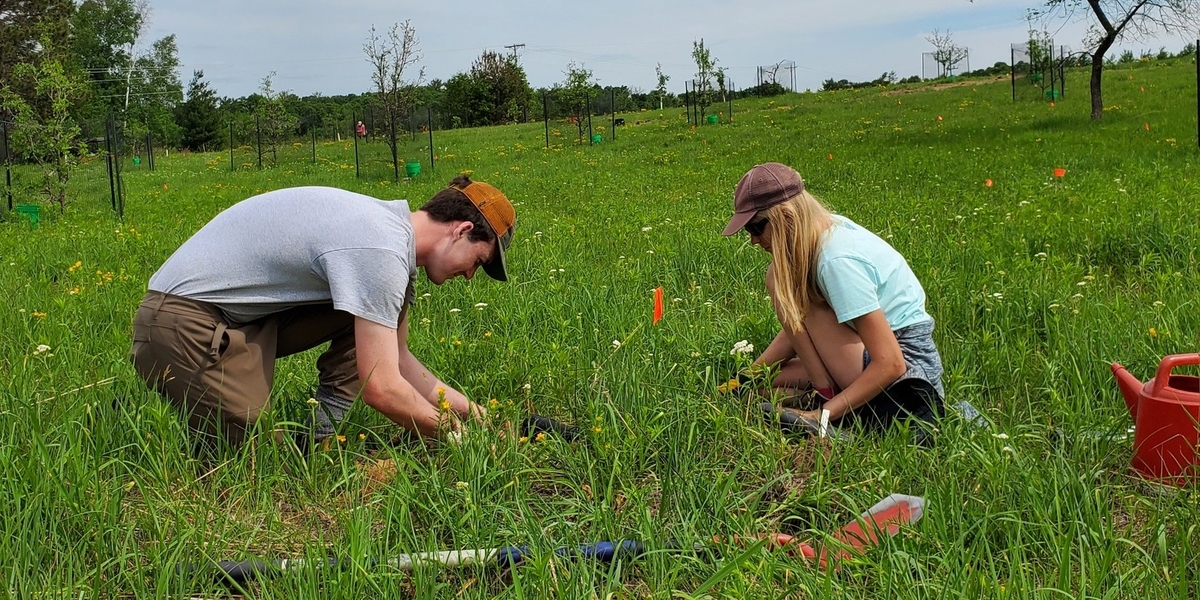
As flowering bulbs like pastel tulips and sunshine-yellow daffodils begin to emerge on the overcast mornings so characteristic of a Minnesota spring, gardeners often get an internal itch. It’s time to get planting. But this year, instead of focusing on zinnias, tomatoes or zucchini, the Isbell Biodiversity Lab is about to launch a new effort at Cedar Creek Ecosystem Science Reserve: the Rescuing Ecosystems and Species Currently Undergoing Extinction (RESCUE) garden. Supported by a National Science Foundation grant and established in 2019, the RESCUE experiment aims to understand how native seed applications can help ecosystems recover from biodiversity loss caused by habitat fragmentation. The RESCUE garden, which is adjacent to the experiment, will be an educational, outreach and research tool showcasing the biodiversity of the local plant community by growing species that occur naturally or were planted in the experiment.
“Regardless of your role in the Cedar Creek community, the garden has something to offer you,” says Dr. Nicole Kollars, lab manager and research scientist for the Isbell Biodiversity lab. “Whether that is ecological data, a restoring stroll through nature, a new understanding of phylogenies (i.e., the study of how species are related), or the opportunity to practice plant identification skills.”
This new garden is no small undertaking. Now, with plans to plant more than 600 seedlings of 200 different species, Kollars, Cedar Creek Education Coordinator Dr. Kara Baldwin, and colleagues have been hard at work thinking of the best ways to organize such a large number of plantings.
“I'm really excited that the garden will be planted in a phylogenetically-informed way,” she says. “Phylogenetics provides a lot of insight into the ecology and evolution of communities. I think it will be really cool to walk through the garden and observe how plant characteristics have changed through evolutionary time. And I'm very excited that the garden will help with developing plant ID skills. For example, it can be very hard to identify plant species in the genus Solidago (think Goldenrods) when the plants are not at the flowering stage. Growing plants like Solidago in the garden will allow us to learn what species look like at all stages of its lifespan.”
Members of the Isbell lab, Cedar Creek staff, Minnesota GreenCorps member Eddy Olson-Enamorado, and local Master Gardeners have been hard at work over the past months getting the RESCUE garden planned and ready. Now, Cedar Creek hopes volunteers will join in some of the final efforts this spring. Volunteers are needed to help map and plan out plots on April 19 and 20, and put the seedlings in the ground on May 11 and 14. Green thumbs and aspiring gardeners can learn more about ways to volunteer and get involved on Cedar Creek’s website.
“I'm so grateful for the many hands and minds who have dreamed this project into existence,” says Kollars. “I’m excited that we can build off all the great work that has been done before I started in this position and ensure that our dreams for the RESCUE garden come to fruition.” — Lance Janssen